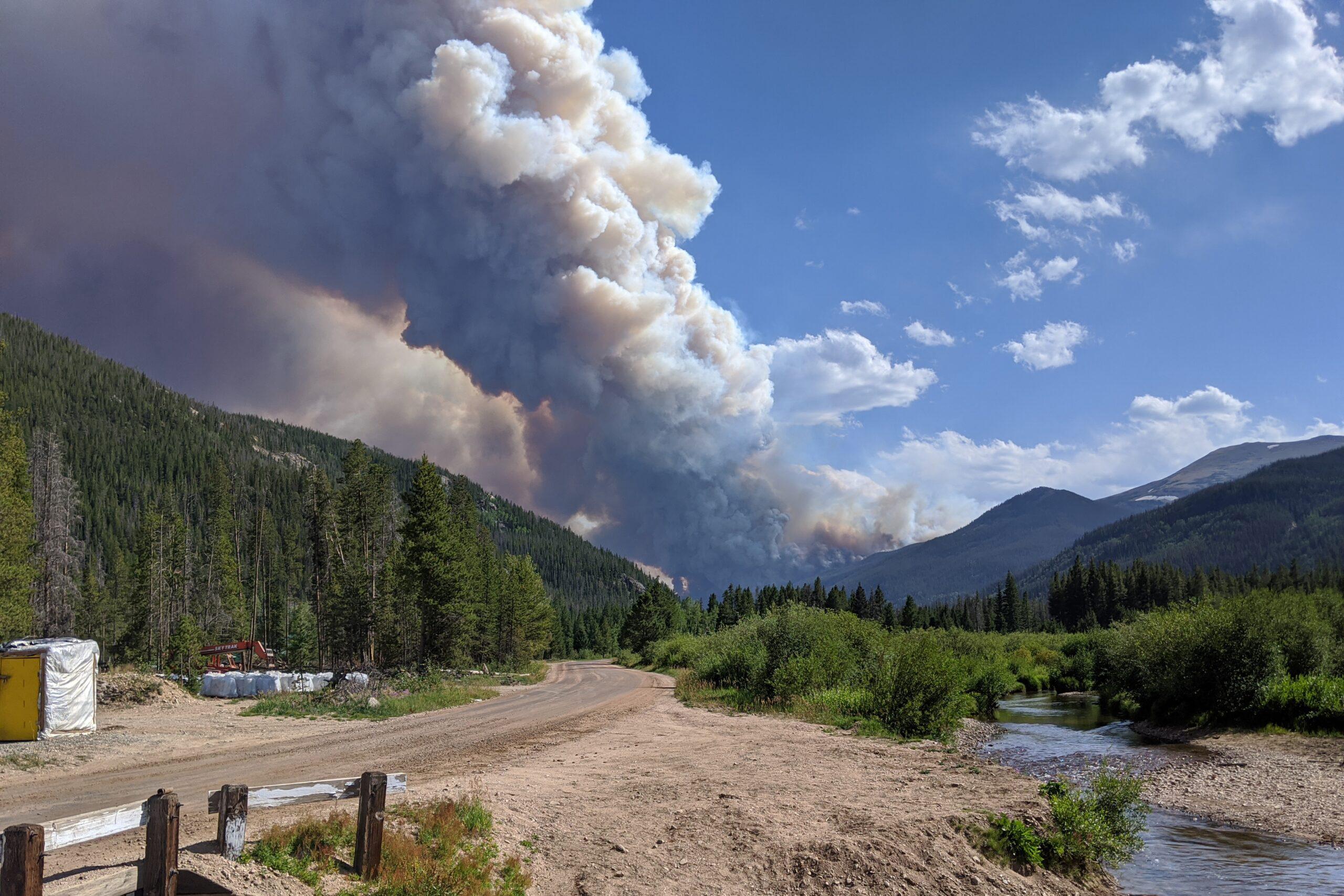
It would be hard to miss the smoke in the air today as multiple large wildfires burn around Colorado.
The state has issued an air quality alert for the Front Range and many northwest counties, warning it's unhealthy — especially for those in vulnerable populations, like children, older adults and those with heart or lung disease.
"When you get into those populations, it gets a bit more dangerous," said Scott Landes, the supervisor of the meteorology and prescribed fire unit for the Colorado Department of Public Health and Environment. "So we ask those folks especially to take it slow and spend as much time indoors as possible."
Landes said staying inside could also help stop the spread of COVID-19, which becomes more of a concern with smoke in the air.
"This would be a bad situation at any time, but when you add COVID-19 into the mix, it becomes a real public health issue," Landes said. "There's been some research shown that exposure to air pollution can worsen COVID-19 symptoms and outcomes.”
He warned that the smoke could irritate and weaken the lungs and immune system, making someone more susceptible to infection.
"People who are the most vulnerable to wildfire smoke, there's an overlap. Those people are usually the most vulnerable to COVID-19 as well," Landes said. "So you really need to take extra caution during this whole episode if you are in one of these vulnerable groups.”
And it's not just the smoke that's making the air quality bad.
"Wildfire smoke can also enhance ozone. So we already have an ozone problem here on the front range region, and this wildfire smoke is just making those ozone concentrations even higher,” Landes said.
A lot went through Emily Fischer's mind when she first spotted the plume of smoke from the Cameron Peak Fire on Thursday. She was backpacking with her family north of Rocky Mountain National Park.
"I immediately shouted to my husband, 'We have to get out now.' We just grabbed the kids' hands and we ran out six miles," Fischer said.
It turns out they were just a few miles from where the fire started, which is now larger than 4,000 acres.
Fischer could tell the wildfire was moving fast from her experience studying them as an associate professor at Colorado State University. She's working to better understand how the particulates that make up wildfire smoke impact health.
"How is that mixture different when someone breathes smoke near the fire versus far from the fire?" she said. "We're still trying to understand how the chemistry of the smoke evolves in the first one to two hours, and as that smoke is admitted and then moves downwind."
Fischer said that while it's most important for at-risk populations to stay inside until the air clears, others should consider it too.
"There's enough that we don't know about smoke that at least for my family, I'm keeping my kids inside today watching movies,” she said.









